You are using an out of date browser. It may not display this or other websites correctly.
You should upgrade or use an alternative browser.
You should upgrade or use an alternative browser.
AOR Replacement & the Joint Support Ship (Merged Threads)
- Thread starter Ex-Dragoon
- Start date
- Reaction score
- 6,149
- Points
- 1,160
Let's say you defined a logical role for a minimally manned ship...say for example an "arsenal" ship to accompany a CSC and provide additional missile launch cells.OK
How about from an accompanying helicopter?
Or an adjacent frigate?
Why would you go through the trouble of creating a detachable control module for the crew to live in if the only purpose is ultimately to act as a lifeboat should the ship get hit by enemy fire. Couldn't the small crew simply have regular quarters and control stations for the 99.9999999% of the time when it's not being targeted by incoming fire and simply have the crew man the lifeboat if a missile hit appears imminent?
Oldgateboatdriver
Army.ca Fixture
- Reaction score
- 4,282
- Points
- 1,010
I think this is the Star Trek he watched over the week end:
Why the fixation on operating ships with little or no crew? What are you trying to achieve with you large cargo ship (not Big Honking Ship, which in Gen. Hillier's view were large amphibious assault ships).?
Why the fixation on operating ships with little or no crew? What are you trying to achieve with you large cargo ship (not Big Honking Ship, which in Gen. Hillier's view were large amphibious assault ships).?
- Reaction score
- 16,631
- Points
- 1,160
Getting on and off a ship at sea is one of the most challenging and dangerous operations going. The whole reason they have these "launched Lifeboats" is to improve the chances of the crews to survive the escape from the ship. There is no way for them to recover it at sea. plus once in the lifeboat, it's utter misery and still you risk death getting rescued from the lifeboat in anything but a calm sea.Let's say you defined a logical role for a minimally manned ship...say for example an "arsenal" ship to accompany a CSC and provide additional missile launch cells.
Why would you go through the trouble of creating a detachable control module for the crew to live in if the only purpose is ultimately to act as a lifeboat should the ship get hit by enemy fire. Couldn't the small crew simply have regular quarters and control stations for the 99.9999999% of the time when it's not being targeted by incoming fire and simply have the crew man the lifeboat if a missile hit appears imminent?
It's sad how brutally accurate that statement really is.Shhh, keep that under your hat.
But I wouldn't worry, Canadians as a whole see the F35 as the only plane in the RCAF (if they even know what a RCAF is) the rest of them are just grey things flying about and they have no idea what they do.
A bunch of grey planes, they may see sometimes, but have no idea what kind of plane it is or what it does...and don't know if they are RCAF or not...
(Personally I quite enjoy the odd moment when I get to 'introduce' our military to someone who doesn't have a clue about it. It always amazes me when people say stuff like "We have those!?" Or something along those lines...)
- Reaction score
- 12,212
- Points
- 1,160
I think this is the Star Trek he watched over the week end:
Why the fixation on operating ships with little or no crew? What are you trying to achieve with you large cargo ship (not Big Honking Ship, which in Gen. Hillier's view were large amphibious assault ships).?
Why minimal crew?
Don't I keep hearing about recruiting problems for the ships we have?
Why have the crew live in the lifeboat?
How much warning are the going to get of an attack?
Besides, the Boat would be the home for the PLC and the coffee pot.
With a big ship attached the crew can get out and stretch their legs. Thay will be doing that in any event to confirm the sensors are sensing the real world.
It would also mean a common module that could be built anywhere, that could be transported by truck, that could be trained on anywhere and that could be plugged into any size ship.
And for the record, I haven't watched Star Trek since Picard ran the bridge.
- Reaction score
- 7,959
- Points
- 1,160
Why don't do existing maintenance on simpler control systems, why does anyone think we can maintain an autonomous ship?Why minimal crew?
Don't I keep hearing about recruiting problems for the ships we have?
Why have the crew live in the lifeboat?
How much warning are the going to get of an attack?
Besides, the Boat would be the home for the PLC and the coffee pot.
With a big ship attached the crew can get out and stretch their legs. Thay will be doing that in any event to confirm the sensors are sensing the real world.
It would also mean a common module that could be built anywhere, that could be transported by truck, that could be trained on anywhere and that could be plugged into any size ship.
And for the record, I haven't watched Star Trek since Picard ran the bridge.
- Reaction score
- 12,212
- Points
- 1,160
Why don't do existing maintenance on simpler control systems, why does anyone think we can maintain an autonomous ship?
Well, I reckon the answer is to give up and hand the keys to China.
Systems and management had to change radically when sails were swapped for steam, when the bridge was electrified, when coal was swapped for oil, with nuclear powered subs....
Answers were found and changes were made.
Cheap ships can be built in numbers so that they can be maintained in harbour.
- Reaction score
- 7,959
- Points
- 1,160
Cheap ships can be built in numbers so that they can be maintained in harbour.
So do you want cheap or do you want autonomous?
Automation and remote control costs a lot, and has severe limits (right now). We would save on crew but would have to massively invest in the FMFs. Which is fine, but it's also not a quick fix.
There is always a balance between automation, crewing, shore support costs and actual operational capability.
- Reaction score
- 12,212
- Points
- 1,160
So do you want cheap or do you want autonomous?
Automation and remote control costs a lot, and has severe limits (right now). We would save on crew but would have to massively invest in the FMFs. Which is fine, but it's also not a quick fix.
There is always a balance between automation, crewing, shore support costs and actual operational capability.
A fact of which I am only too well aware.
Despite that most factories I am acquaint with have been replacing muscles with motors for decades and reducing manpower to two men and a coffee pot per shift and a diminishing maintenance staff.
Labour costs more than PLCs and is harder to come by.
Something that seems to have got the attention of a number of shipping companies and yards.
The Triple E-class vessels are operated by a crew of 13, while the even larger Globe class requires 31 on board

Triple E-class container ship - Wikipedia
The world’s first fully electric, completely autonomous cargo ship has successfully completed its maiden voyage in Norway
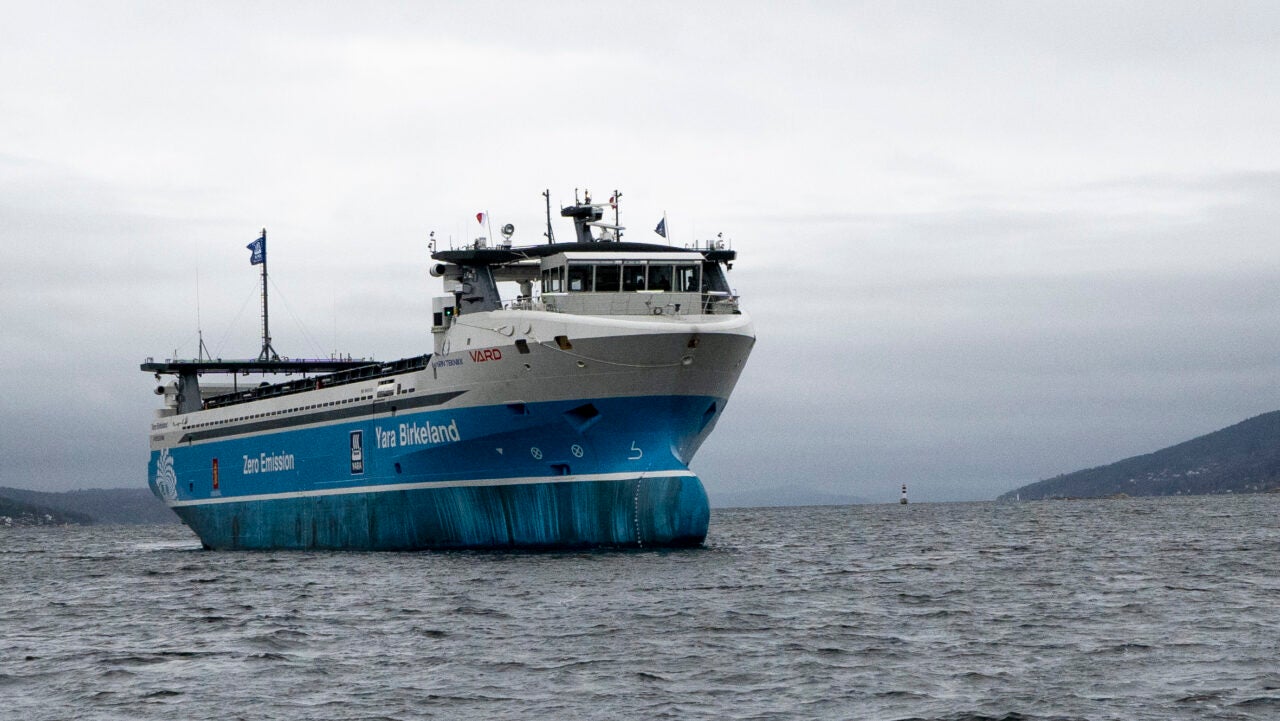
Crewless cargo: the world’s first autonomous electric cargo ship
The world’s first fully electric, completely autonomous cargo ship has successfully completed its maiden voyage in Norway.
Pentagon’s Ghost Fleet Program Ends, Its Four Unmanned Ships Will Be Transferred To The Navy
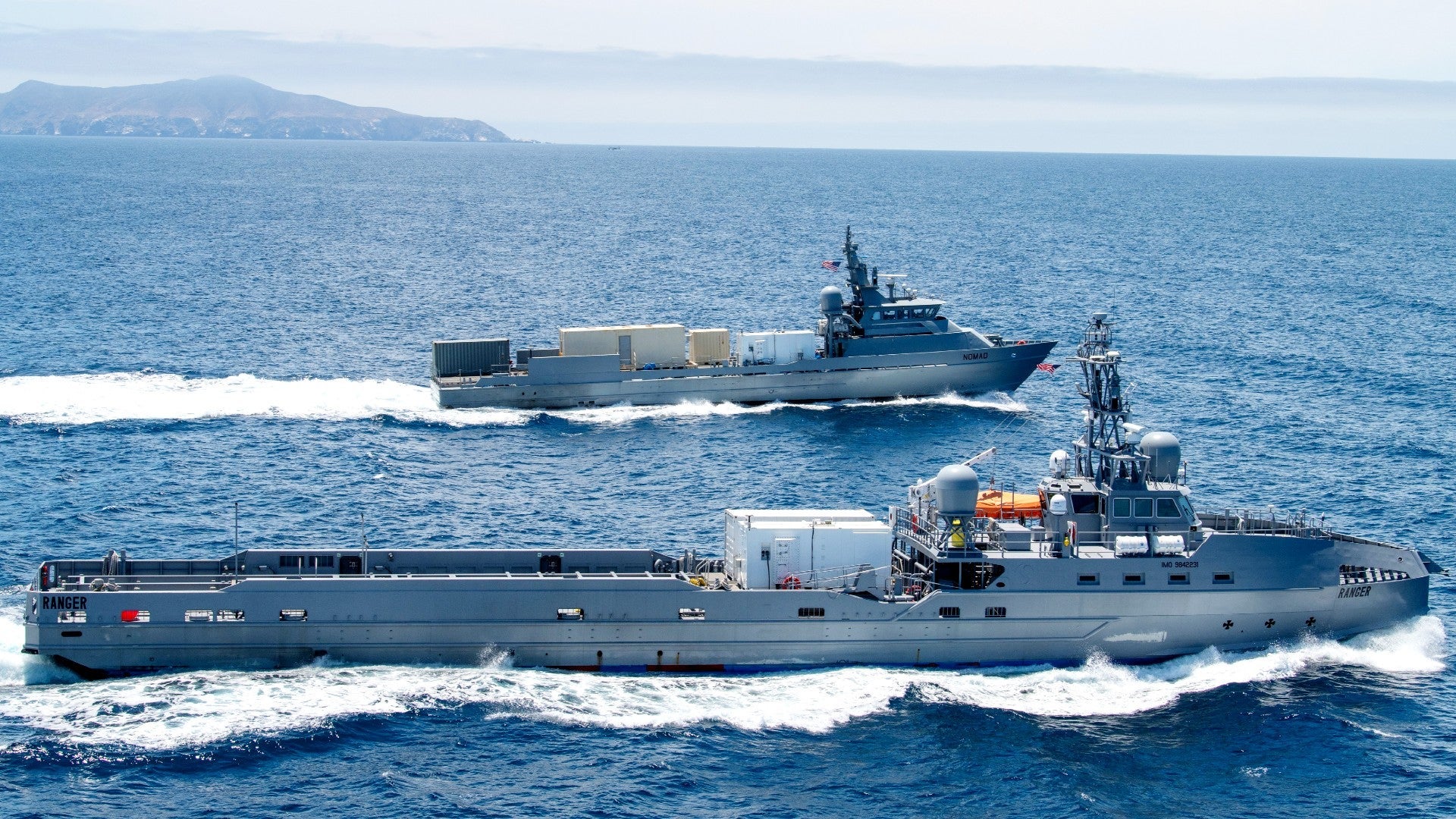
Pentagon’s Ghost Fleet Program Ends, Its Four Unmanned Ships Will Be Transferred To The Navy
The ships are slated to join the Navy's experimental surface warfare squadron which is exploring ways to incorporate unmanned vessels into the fleet.
Apparently ships don't need crews.
My personal bias is that I would like to see some supervisory staff on board to minimize the risk of this.

Mind you that ship did have a crew of 33 on board ...
- Reaction score
- 7,959
- Points
- 1,160
@Kirkhill That applies to technicians as well that work ashore; if the GoC was going to invest in supporting the trades that would be a big help. Even with outsourcing to industry there isn't much capacity for a massive shift like that.
Just like the electric car is going to need a huge infrastructure upgrade a big shift to automated cargo ships would need a huge maintenance/infrastructure/personnel upgrades for a lot of ports, and then rules for how that would work for things like driving the ship etc all need worked out. Simple things like how a pilot comes on board and brings the ship in to port are still up in the air.
ALso the turn around on cargo ships doing the unloading is insane, so the maintainers doing running repairs is needed for the slim profit markings. I'm not sure what would happen if they went from a 10 hour turnaround to a few weeks.
Just like the electric car is going to need a huge infrastructure upgrade a big shift to automated cargo ships would need a huge maintenance/infrastructure/personnel upgrades for a lot of ports, and then rules for how that would work for things like driving the ship etc all need worked out. Simple things like how a pilot comes on board and brings the ship in to port are still up in the air.
ALso the turn around on cargo ships doing the unloading is insane, so the maintainers doing running repairs is needed for the slim profit markings. I'm not sure what would happen if they went from a 10 hour turnaround to a few weeks.
- Reaction score
- 16,631
- Points
- 1,160
Shipping companies other than Japanese are notoriously cheap, you can be guaranteed they go for autonomous crewed ships, with systems from WISH or good systems never properly maintained until the accident rates skyrocket and insurance makes crewed vessels cheaper.So do you want cheap or do you want autonomous?
Automation and remote control costs a lot, and has severe limits (right now). We would save on crew but would have to massively invest in the FMFs. Which is fine, but it's also not a quick fix.
There is always a balance between automation, crewing, shore support costs and actual operational capability.
Oldgateboatdriver
Army.ca Fixture
- Reaction score
- 4,282
- Points
- 1,010
Many merchant ships operate with a crew of 12 to 20 these days. But they are all either bulk carriers - not self loading/unloading type, tankers or container ships. All ships which, by design do not have to carry out their own loading or unloading, and therefore only need the watch keeping crew plus a cook. They usually rely on an unmanned engine room that simply sends an alert to the Engineering mate and/or his assistant and the bridge if something goes wrong on the engine side. If such thing go wrong, then they either drift, collide or run aground until the engineering mate fixes the problem or outside assistance arrives.
This brings me back to my original question - what are you trying to achieve with your large cargo ship?
This brings me back to my original question - what are you trying to achieve with your large cargo ship?
- Reaction score
- 12,212
- Points
- 1,160
Shipping companies have been making profits for centuries in a high risk environment. Lloyds loves them.Shipping companies other than Japanese are notoriously cheap, you can be guaranteed they go for autonomous crewed ships, with systems from WISH or good systems never properly maintained until the accident rates skyrocket and insurance makes crewed vessels cheaper.
It is not just navies that have had to adapt to the change from sail to steam and coal to oil and barrels and slings to bulk and containers and ro-ro.
Those changes happen pretty fast when somebody figures out how to take advantage of the new rules first.
I agree there will be losses. Just like there were quite a few oil spills until the industry figured out the bits and pieces. But that didn't stop the move to ever larger tankers.
If somebody figures out there is an advantage in electric batteries, even if that advantage is just keeping some miserable civil servant happy, then they will figure out how to make more money than the other guy while doing it for less money.
Adam Smith 101.
- Reaction score
- 12,212
- Points
- 1,160
Many merchant ships operate with a crew of 12 to 20 these days. But they are all either bulk carriers - not self loading/unloading type, tankers or container ships. All ships which, by design do not have to carry out their own loading or unloading, and therefore only need the watch keeping crew plus a cook. They usually rely on an unmanned engine room that simply sends an alert to the Engineering mate and/or his assistant and the bridge if something goes wrong on the engine side. If such thing go wrong, then they either drift, collide or run aground until the engineering mate fixes the problem or outside assistance arrives.
This brings me back to my original question - what are you trying to achieve with your large cargo ship?
The origin of my interest was
contracting for cargo ships may not be an option, because recent work suggests that finding contractors who do not have close ties to China or other disqualifiers will be very challenging.
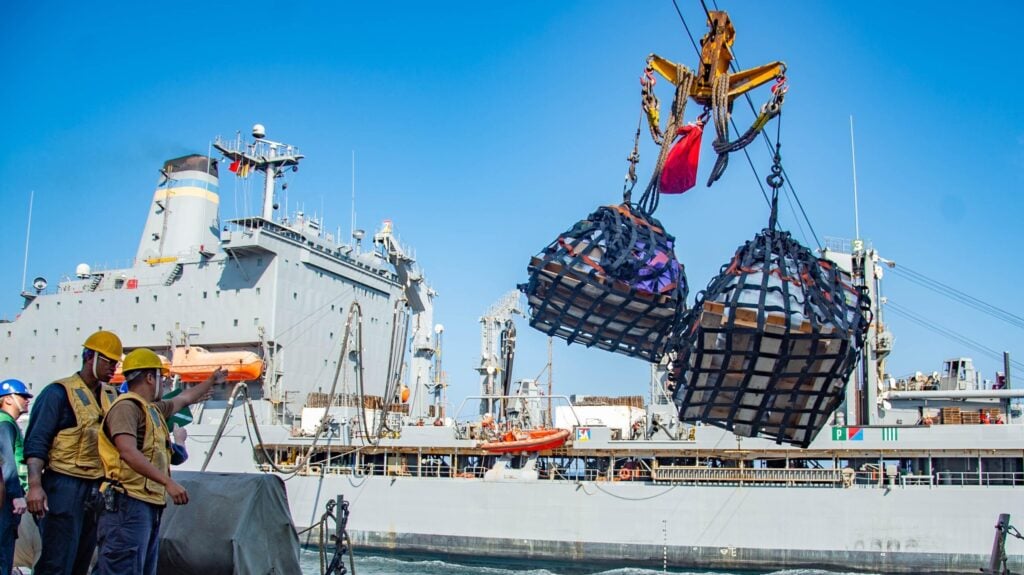
Professionals talk logistics: Who will fix Pacific lift? - Breaking Defense
It’s 10,000 kilometers from L.A. to Taipei. How will supplies cross that vast distance in event of war with China? Two RAND experts argue only Congress can force the services to work together.
as I noted in

The Future of Marine Corps Logistics
https://www.marines.mil/Installations-and-Logistics-2030/
 www.army.ca
www.army.ca
Apparently there is not enough secure transport available to supply an Indo-Pacific campaign for an extended period.
The US Army, Marines and Navy, as well as the Air Force, are all looking at other and saying that's your job. And your budget.
Meanwhile, with all the other off-shoring that has been going on for the last few decades the west has not only off-shored its yards and its sailors it has off-shored the entire culture that supported "a life on the ocean waves". You can't pull people away from their smart phones long enough to get their attention.
They might as well be watching video feed from the mast of a RoRo.
As to carrying crews to load and unload a vessel.... I am pretty sure that the car terminals at Tacoma and Richmond are run by local residents. Port Logistics is a trade in both the US and the UK armies. His Majesty's dockers.
So, in short, I am looking for a modern Liberty Ship but leaning more towards a RoRo-Car Transporter and Sea-Can system.
A cross between the Ranger USV
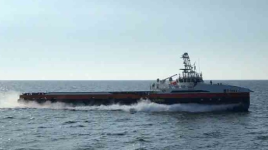
And the Point Class
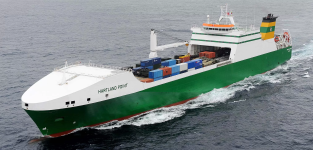
Something in the 25000 tonne class that could be built by SeaSpan and Davie perhaps?
Oldgateboatdriver
Army.ca Fixture
- Reaction score
- 4,282
- Points
- 1,010
OK. I see now.
I won't tell you what I think of that RAND alleged experts.
If anyone in Washington is thinking war against the Chinese as an invasion and conquest of China, they are smoking bad grass IMHO. For China to fail, you only need to cut all its maritime routes (easy as they are restricted and the "anti-China" coalition has good supply bases all around) and pounce on their supply lines otherwise from the air (OK, I know, it will drag Russia in on their side, but so what). They simply do not have the internal natural resources required. The country will implode under the weight of restrictions imposed on the population. Do you know how many food riots happen every year in China right now, when there are no restrictions on their imports.
Also, do not confuse supplying the surrounding bases (Australia, Japan, Korea, etc) wit war time material, and the sealift required to then use it intra theatre.
I won't tell you what I think of that RAND alleged experts.
If anyone in Washington is thinking war against the Chinese as an invasion and conquest of China, they are smoking bad grass IMHO. For China to fail, you only need to cut all its maritime routes (easy as they are restricted and the "anti-China" coalition has good supply bases all around) and pounce on their supply lines otherwise from the air (OK, I know, it will drag Russia in on their side, but so what). They simply do not have the internal natural resources required. The country will implode under the weight of restrictions imposed on the population. Do you know how many food riots happen every year in China right now, when there are no restrictions on their imports.
Also, do not confuse supplying the surrounding bases (Australia, Japan, Korea, etc) wit war time material, and the sealift required to then use it intra theatre.
- Reaction score
- 6,149
- Points
- 1,160
I still say that for transports you simply subsidize a couple of extra Ro-Ro's for BC Ferries and Marine Atlantic that have the required upgraded comms, etc. and a strengthened section for installation of a helipad. Mandate "X" number of crew positions for Reservists and during the winter maintenance periods conduct your annual loading/unloading exercises.
have to introduce a new yard if you want to introduce more new builds. I doubt that any of the 3 could fill another type order for the next decade or more. Also there is the training involved for skilled trades such as welders,cable pullers, plumbers. Love to see it though. Better skilled trades than more civil servants; at least there would be something to show for it.
- Reaction score
- 7,959
- Points
- 1,160
Even back in the day guarding convoy runs was a challenge, and that was before satellites let you track ship's movements. Heavy lift without significant pickets would just become expensive ocean debris, and we likely couldn't afford to lose the equipment on the ships (as seen by how little we can actually give to Ukraine).
I think we could play a useful role in protecting convoys, and do things like have a tanker to help keep ships (and their helo fuel) topped up, but I don't see how we would ramp up to add a significant and new capability without political vision, public support, funding and resources. Those are all spotty at best, and very infrequently are they overlapping long enough to be useful.
I think we could play a useful role in protecting convoys, and do things like have a tanker to help keep ships (and their helo fuel) topped up, but I don't see how we would ramp up to add a significant and new capability without political vision, public support, funding and resources. Those are all spotty at best, and very infrequently are they overlapping long enough to be useful.
Here is the Seaspan Shipyard update for June:
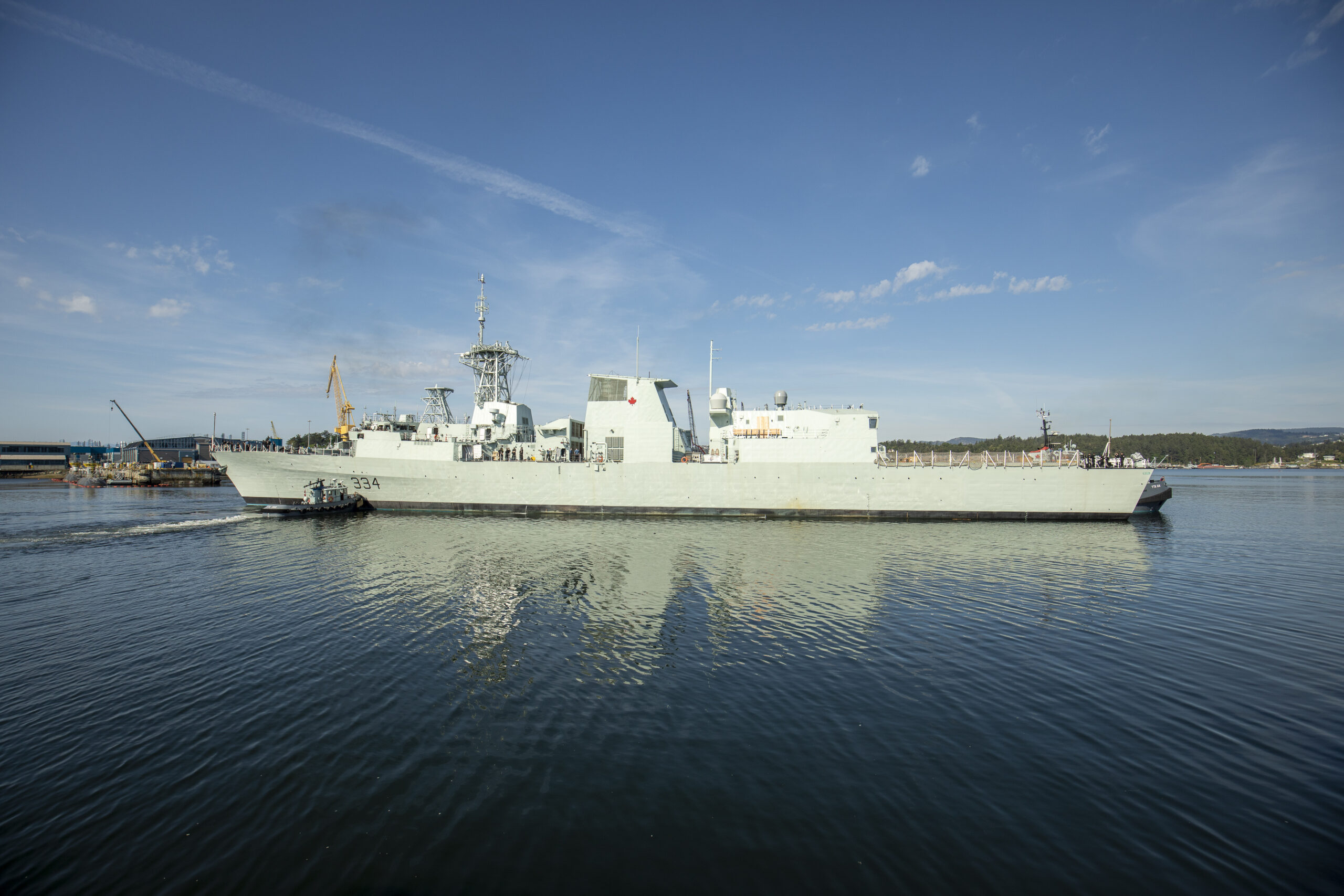
 www.seaspan.com
www.seaspan.com

Q2 Update - FROM THE NORTH SHORE TO THE ISLAND, SEASPAN SHIPYARDS REACHED NEW MILESTONES THIS QUARTER - Seaspan
June 29, 2023 With summer hitting the BC coast early, it was full steam ahead for our three shipyards – new ships are being built, old(er) ships are being maintained, and innovative technologies are changing the marine industry. Vancouver Shipyards At Seaspan Vancouver Shipyards in North...
Similar threads
- Replies
- 46
- Views
- 97K
- Replies
- 15
- Views
- 50K
- Replies
- 152
- Views
- 117K

